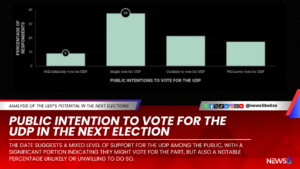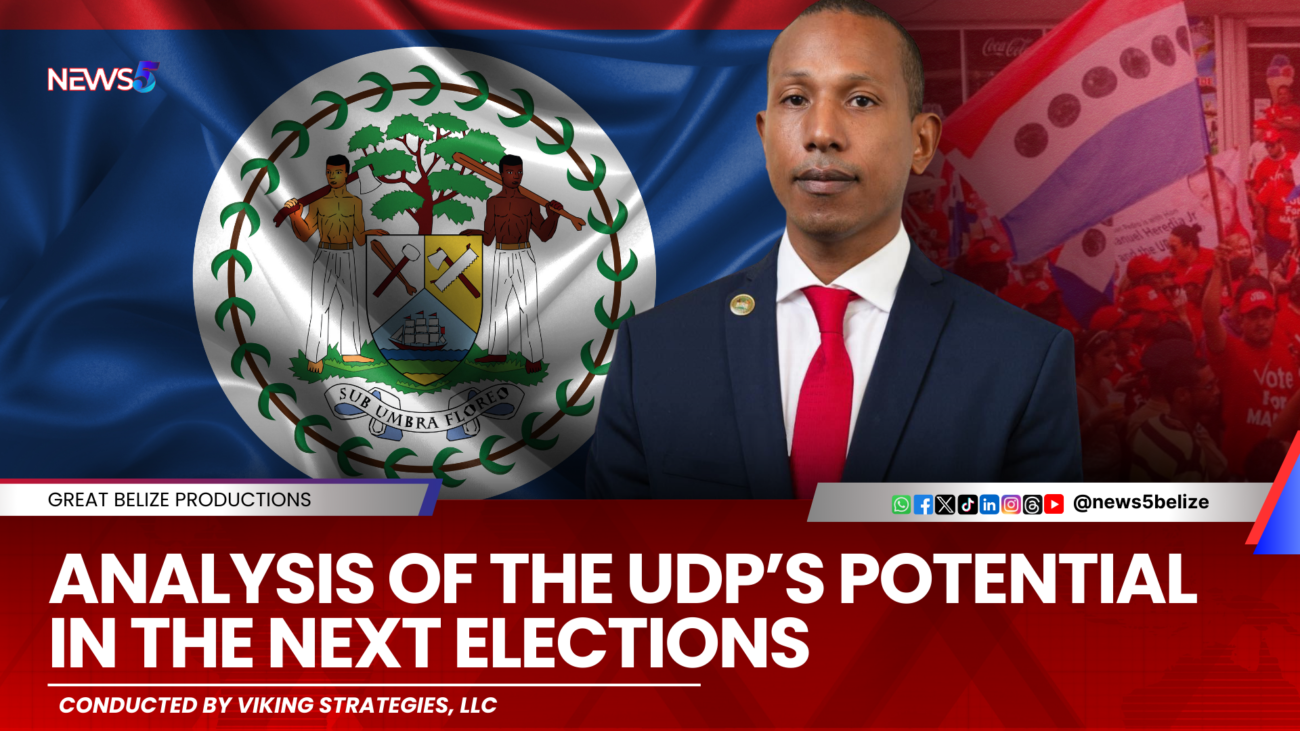2024 Election Analysis: UDP’s Chances Revealed Through Survey and Models
The survey was conducted by Vikings Strategies LLC.
This analysis covers election data in Belize from 1998 through 2020, highlighting voting patterns and trends across constituencies. For each constituency, these were examined:
Historical Voting Trends – A review of past election results.
2020 Election Results – Analysis of the winning party and voting margins.
UDP’s Current Potential – Based on the Belize 2024 Survey, the United Democratic Party (UDP) is projected to secure 42%-44% of the national vote, slightly improving from 37% in 2020.
Probability and Regression Models – We applied statistical models (linear, non-linear, Huber regression, and probability analysis) to estimate each constituency’s likelihood of leaning toward the UDP or People’s United Party (PUP). These models classify constituencies as Safe UDP, Likely UDP, Lean UDP, Toss-up, Lean PUP, Likely PUP, or Safe PUP, depending on current polling.
Explanation of Models

1. Linear Model
This model assumes a consistent relationship between the national vote share and local results. For instance, in Cayo North, if the UDP wins 50% nationally, the model predicts 50.8% in that constituency. However, it may oversimplify real-world dynamics where local factors differ from national trends.
2. Non-Linear Model
This model captures more complex relationships where changes in national vote share don’t lead to proportional changes locally. In Cayo North, a national vote share increase from 50% to 52.5% may lead to a disproportionate local rise from 47.2% to 53.4%, showing that national performance can have outsized effects in certain constituencies.
3. Huber Regression Model
The Huber model adjusts for outliers (e.g., unique candidate popularity, local scandals) and is robust in cases where local results deviate from national trends. For Cayo North, if the UDP receives 50% nationally, the Huber model predicts 50.9% locally, accounting for local dynamics while controlling for extreme deviations.
4. Probability Analysis
This model estimates the likelihood of the UDP winning a constituency based on polling and past results. For instance, the UDP needs at least 49.9% of the national vote for a 50% chance of winning Cayo North. Currently, with national support between 42% and 44%, the UDP’s chance of winning the area is around 40.2% to 41.6%.
UDP’s Prospects in the 2024 Elections
Viking Strategies’ annual Belize Survey reveals shifting political dynamics. The 2024 survey, with a sample size of 968 and a ±3.21% margin of error, highlights key challenges for both the UDP and PUP.
– Definite Support: 9% of voters strongly back the UDP, with 38% open to the party. Comparatively, 18% of voters are firmly behind the PUP, with an additional 40% considering them.
– Potential National Support**: The UDP’s support is projected between 41.6% and 43.7%, suggesting they are competitive but still face challenges.
Survey Data and Modeling Application
Using survey data and Huber models, the analysis projects potential election outcomes. With the UDP polling between 42% and 44%:
– At 42% national support, the UDP is expected to win 5 seats, with 4 additional seats in contention.
– At 44% support, they may secure 6 seats, with competitive odds in 8 more constituencies.
Constituency-Level Analysis
This section includes detailed narratives and graphs for each constituency, using Huber regression and probability models to assess the likelihood of the UDP securing victories. All data is sourced from the Belizean Elections and Boundaries Commission.







Facebook Comments